One might think of rocks as scary or funny or thought provoking but most people just think of them as rocks in general. Curator John G. Hampton in the exhibition, Rocks, Stones, and Dust, at UTAC has figured out a way to involve all of those aspects and more in this show. He is the curator-in-residence and has established a very unique narrative for the exhibition. According to him, this show did not start with rocks, but with his search of “beingness”. Hampton discovered that, unintentionally, his research seemed to return to rocks – whether in indigenous folklore or the scientific beginning of life on Earth itself, all tales have their roots in rocks.
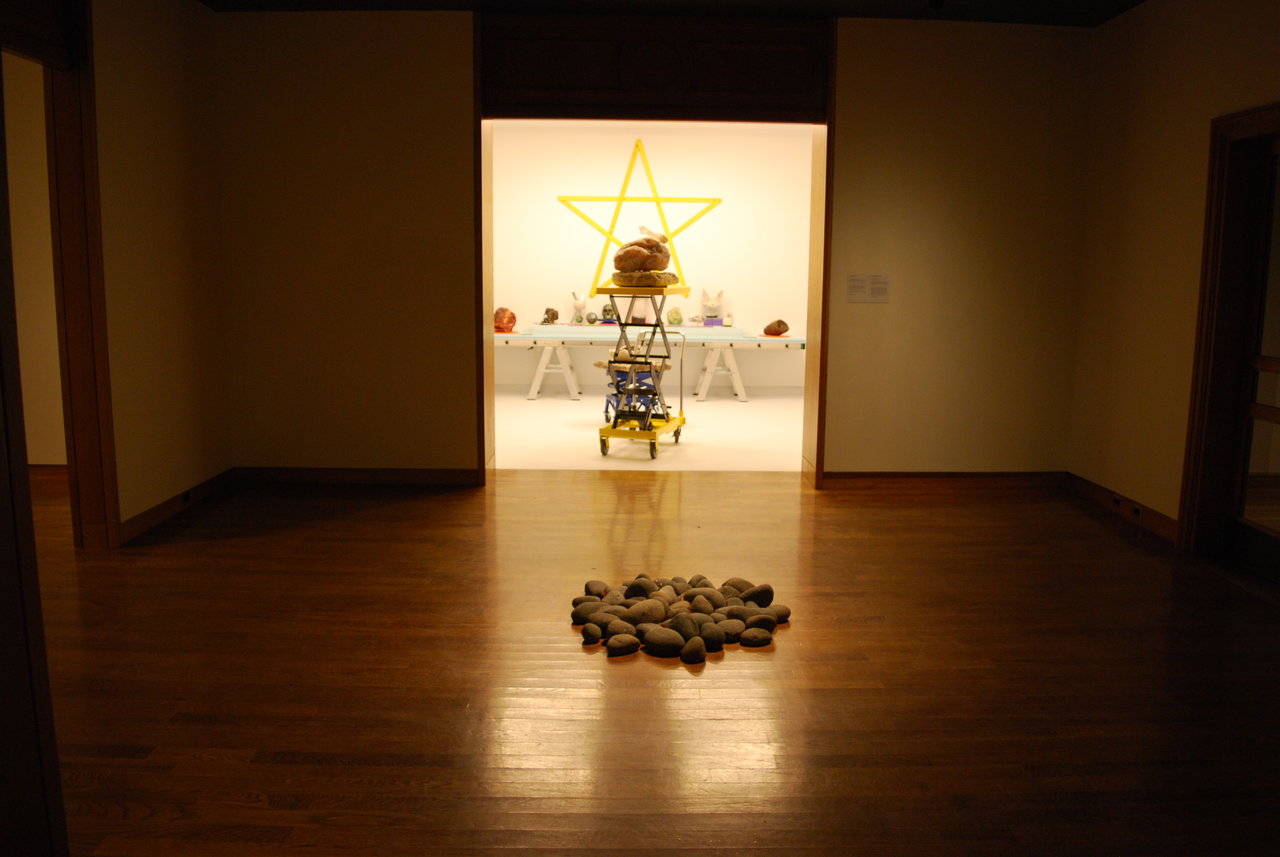 Installation view with Michael Belmore, Smoulder (front) and FASTWÜRM, C.A.T. (back)
Installation view with Michael Belmore, Smoulder (front) and FASTWÜRM, C.A.T. (back)
Fitting for Halloween, there is a distant noise in the gallery. The sound is coming from the furthest room of the gallery, so while visiting this noise always plays in the background. Sounds, like whistling, grunting, mumbling, rambling, yelling are setting the atmosphere of the exhibition. The noise is actually juxtaposes the first few pieces near the entrance. As if to ease us in, the space greets its visitors with six long humidifiers making up a walkway. These very gentle pieces have a fossil placed on top of each one, and the vapour spills out through them, moistening both the fossils and the room. Speeding up the process of erosion, this piece establishes a cycle of energy. Electricity is used in the same way that energy from fossil are usually used, it powers the humidifier then the moisture ‘quickly’ erodes the fossils on top of the humidifier, turning them back into energy source. Jason de Haan’s installation has a gentle epic sense as the soft hum of the humidifiers evokes a process that takes an insurmountable time to be completed.
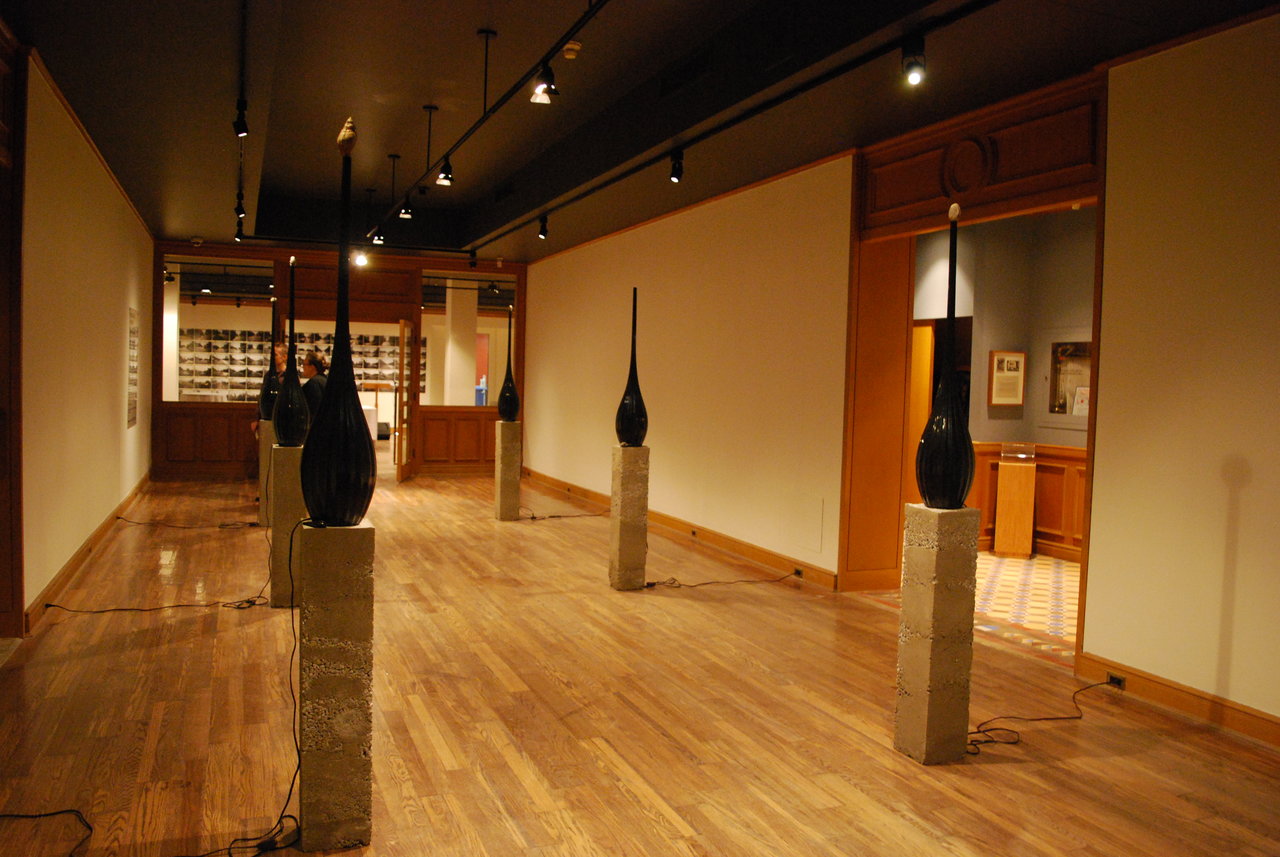 Jason de Haan, Swallow all the Brain, 2015, brachiopod, clam, and ammonite fossils, ultrasonic humidifiers, cast aggregate concrete plinths
Jason de Haan, Swallow all the Brain, 2015, brachiopod, clam, and ammonite fossils, ultrasonic humidifiers, cast aggregate concrete plinths
As we pass the walkway through the doors, there is a small room with three pathways. In the centre there is a gathering of moderately sized rocks that have been carved to fit into a pattern just like pieces of a puzzle. The cut surface – where the rocks touch each other – has been painted to the colour of warm copper. Recreating a dying campfire, ”Smoulder” by Michael Belmore reminds us of the feeling of staring into the pit timelessly, as the last flames burn out and all what remains of the fire are the warm rocks.
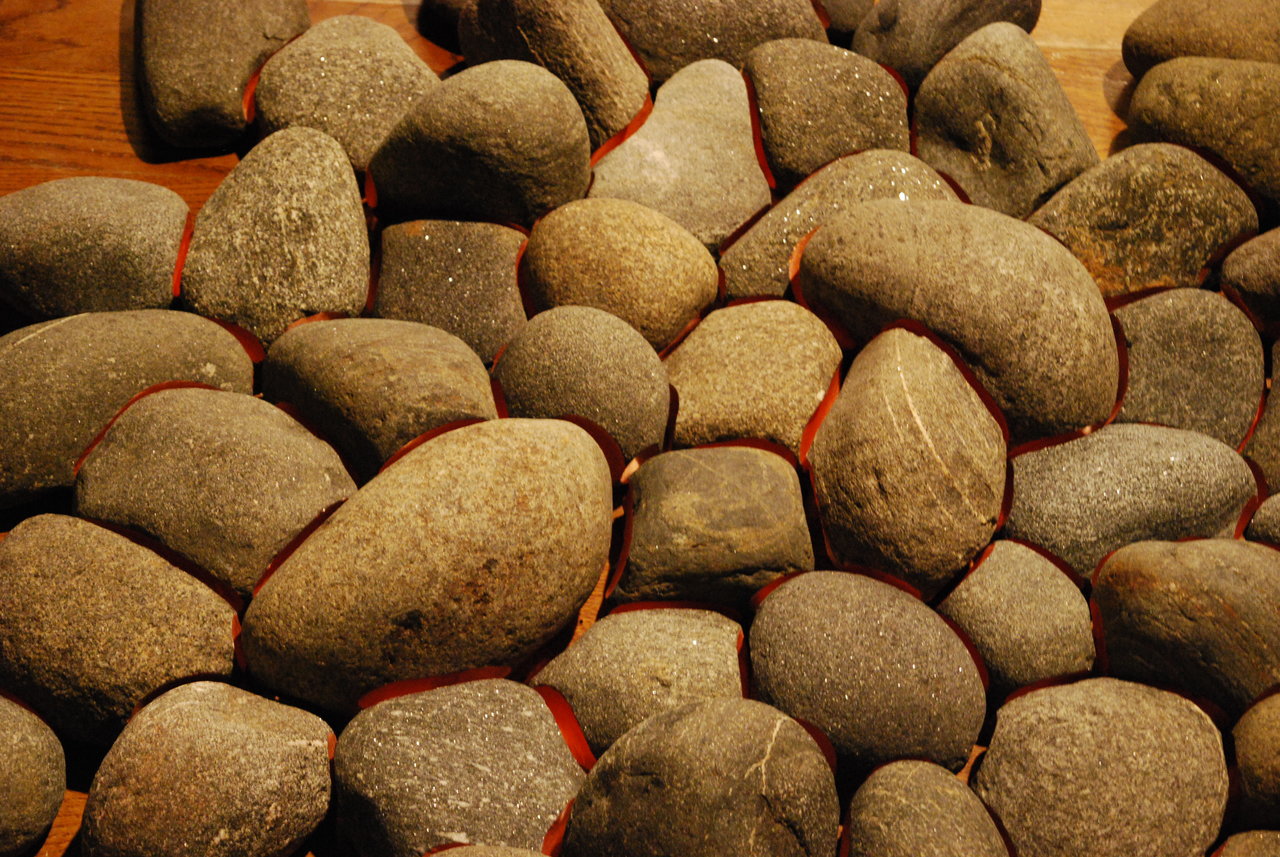 Michael Belmore, Smoulder, 2010-11, detail
Michael Belmore, Smoulder, 2010-11, detail
Each of the three paths seems to be radically different from one another. There is a crowded display by both modern and ancient artifacts with bright colours created by FASTWÜRM on the right. In the front there is a minimalist display of smaller rocks by Kerri Reid, Bonnie Devine, Kelly Jazvac, and Lucy Tasseor Tutsweetok placed on glass shelves or in showcases; and the monotone photography by [name] on the right.
![]() FASTWÜRM, C.A.T. (Core Affect Traffic), 2015. raku, geological samples from FASTWÜRM’s collection, and C.A.T. system configuration and iconography
FASTWÜRM, C.A.T. (Core Affect Traffic), 2015. raku, geological samples from FASTWÜRM’s collection, and C.A.T. system configuration and iconography
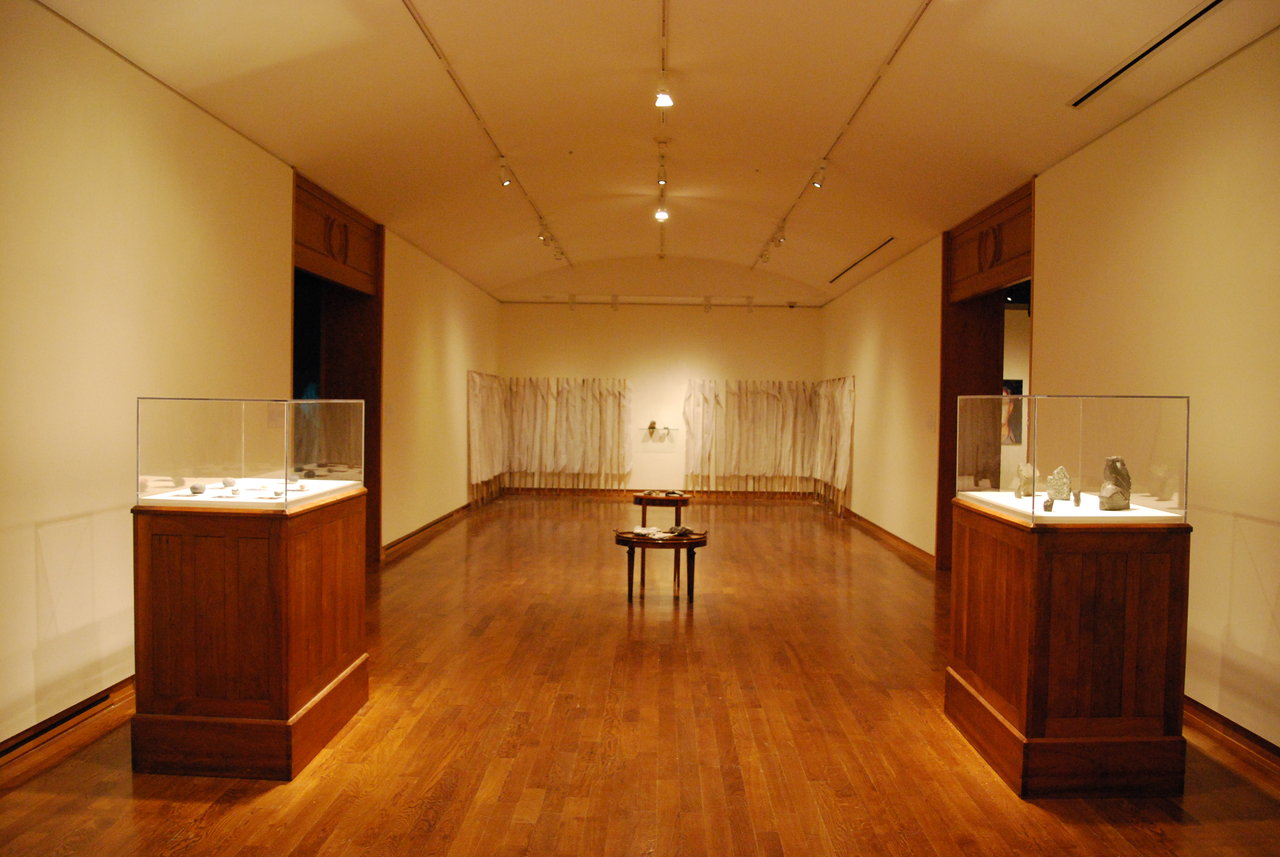 From left to right: work by Kerri Reid, Bonnie Devine, Kelly Jazvac and Lucy Tasseor Tutsweetok
From left to right: work by Kerri Reid, Bonnie Devine, Kelly Jazvac and Lucy Tasseor Tutsweetok
There are even more rooms further down. On the right are works by Marcelo Moscheta, Lawrence Weiner, Spring Hurlbut and Nicholas Mangan’s video installation. Mangan fascinatingly recreates the aesthetic of a fast-evolving galaxy by throwing a handful of Zircon dust and filming it at a 1/100th speed. With black background and bright lights that highlight the specks, the result is a gorgeous clip with shiny ‘stars’ falling down slowly. One loses the sense of time as becoming absorbed into the film in a private, pitch black, little room.
 Susanne Kriemann, Untitled (nuclear), 2013. Inkjet on Hahnemuhle Photo Rag 308 gr
Susanne Kriemann, Untitled (nuclear), 2013. Inkjet on Hahnemuhle Photo Rag 308 gr
Finally we follow the noise into the far-left room where rocks with human personalities surprise us. It is an installation with a projector and two large stones on a pedestal. The edgy stones cast a shadow onto the projection and one by one, similarly shaped stones fall from the top, grunting, whistling, and yelling. Their objective is to return to their origin, the shadow of the stone. Some have an easy time, while others have a hard time doing so, thus the easy going humming or the frustrated mumble. Didactic panels try to explain the procedure but instead many of them tend to specify too much of its intentionality, narrowing the possible subjective responses. “Pleasure Stones” by Egill Sæbjörnsson sums it up the best: “In this theatrical installation, two Icelandic lava rocks animated through light, colour, and sound. The character brought out of the rocks offers a playful meditation on the beingness of stone. In an interview with new materialist philosopher Jane Bennet, the artist asks: ‘given that everything on Earth comes out of magma, and that living creatures descend from inanimate materials, are human beings just like walking stone?’ ‘Yes [answers Bennet].” I found that it is better to look at the work first, and then skimming the didactic panels with some personal reflections already in mind, untainted by the directions given.
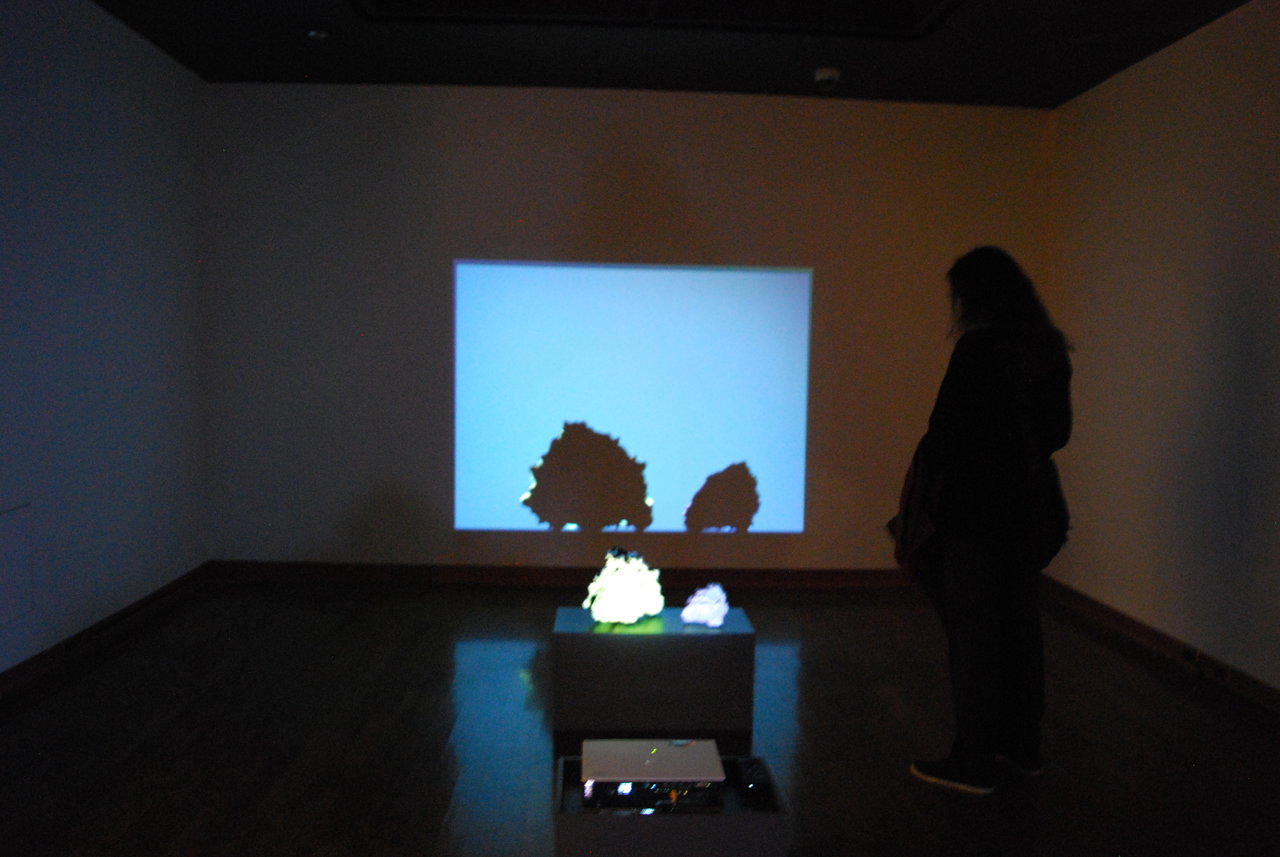 Egill Sæbjörnsson, Pleasure Stones, 2008, lava rocks with a single-channel video (7 minutes)
Egill Sæbjörnsson, Pleasure Stones, 2008, lava rocks with a single-channel video (7 minutes)
Rocks, Stones, and Dust is a highly intentional exhibition that explores the theory that humans share their roots with rocks from the early period of the development of Earth – widening our perspectives of our beginning.
Text and photo: Sunny Kim
*Exhibition information: October 28 – December 18, 2015, University of Toronto Art Centre, 15 King’s College Circle, Toronto. Gallery hours: Tue & Thu – Sat 12 – 5, Wed 12 – 8 p.m.
